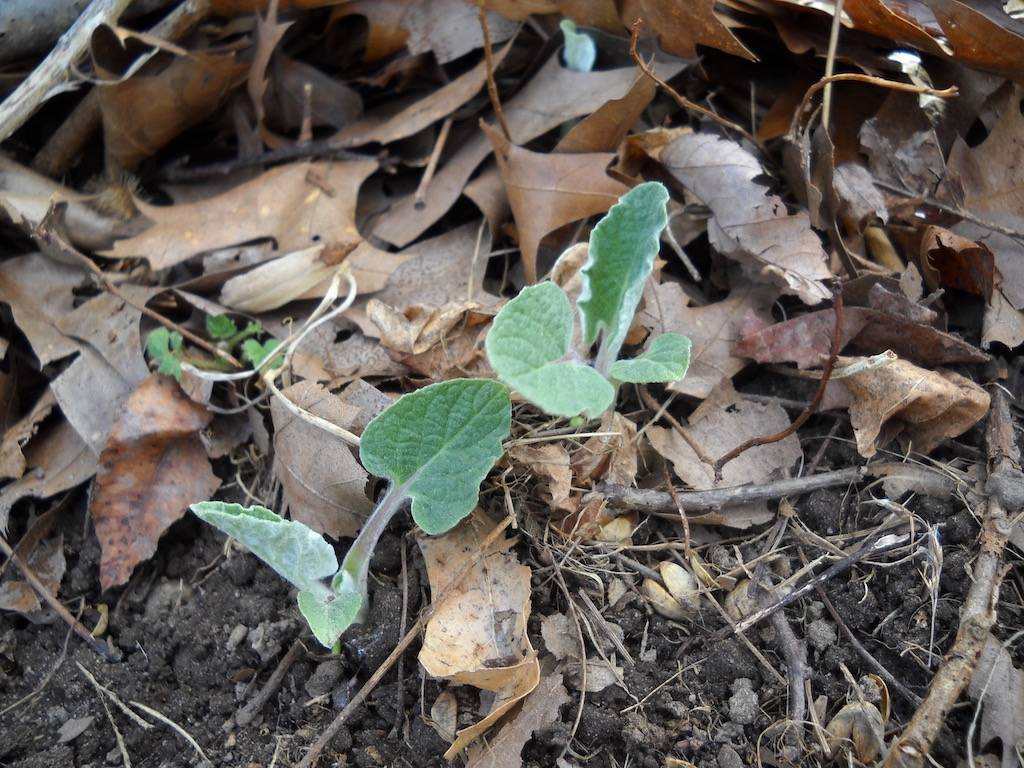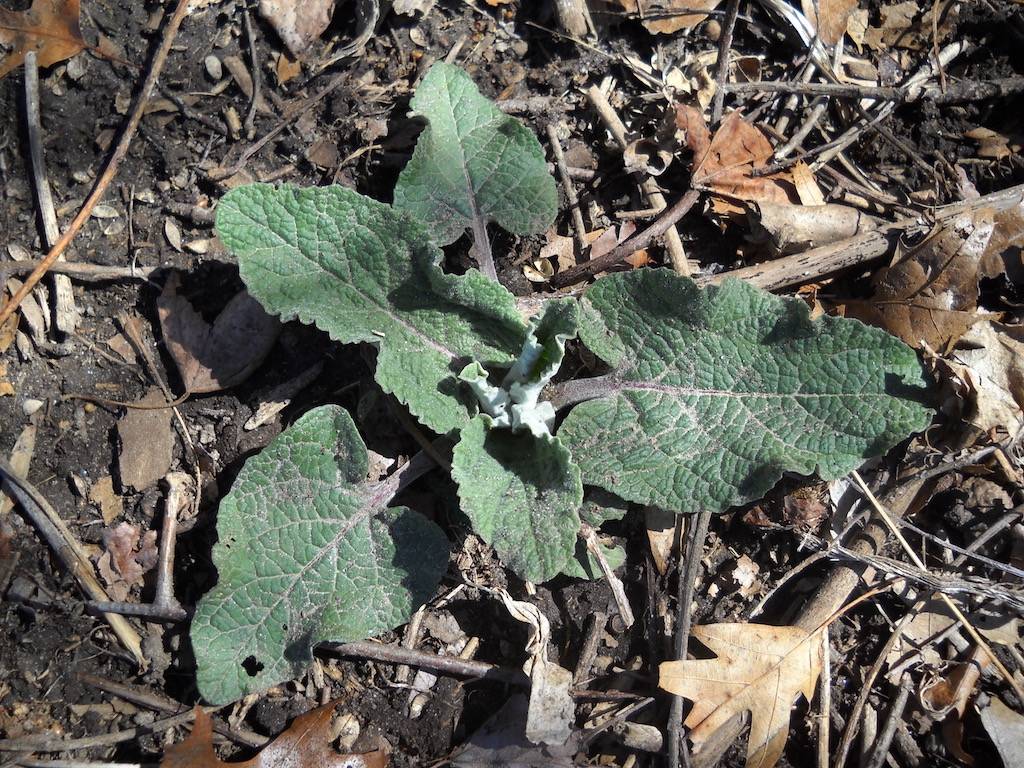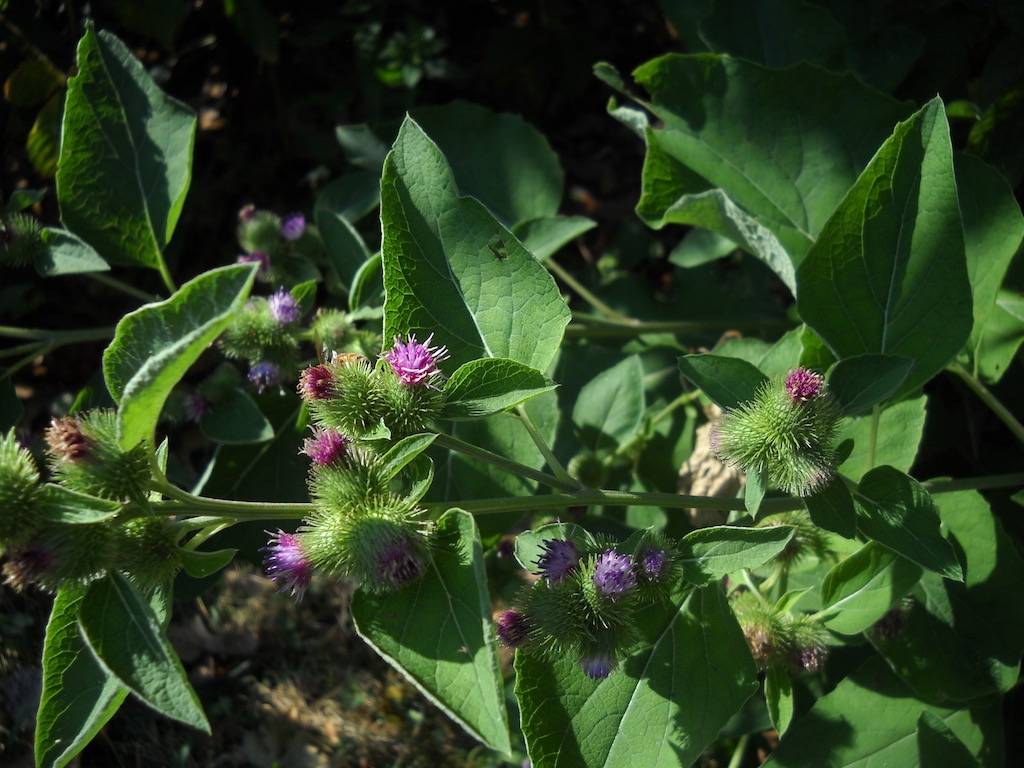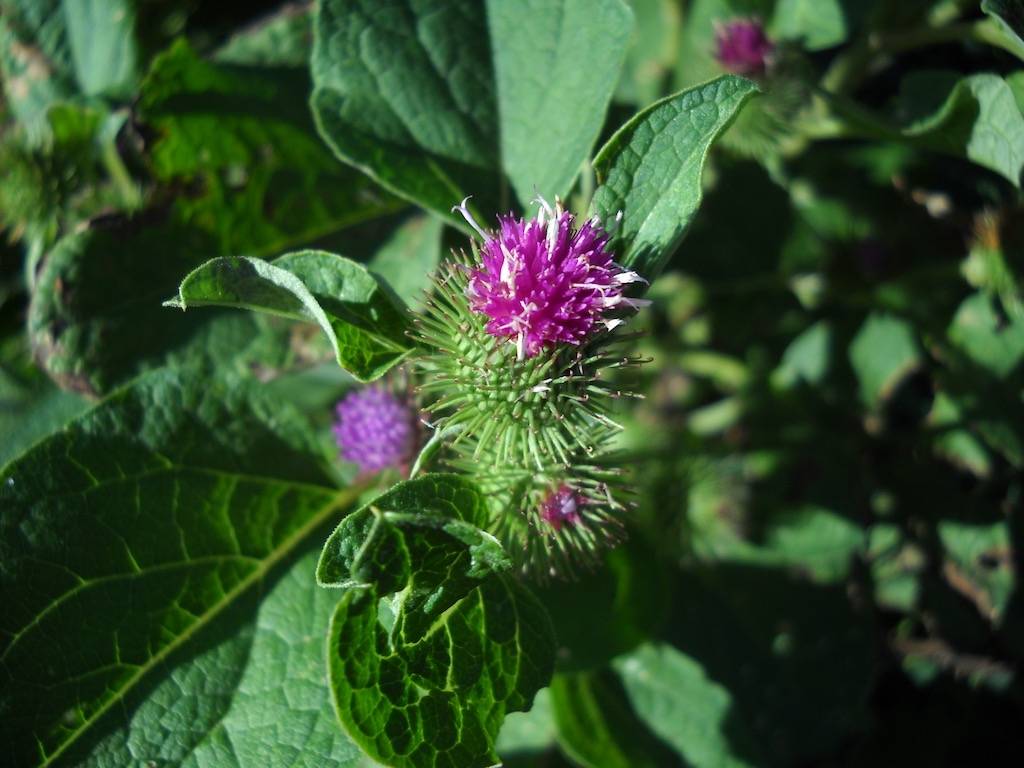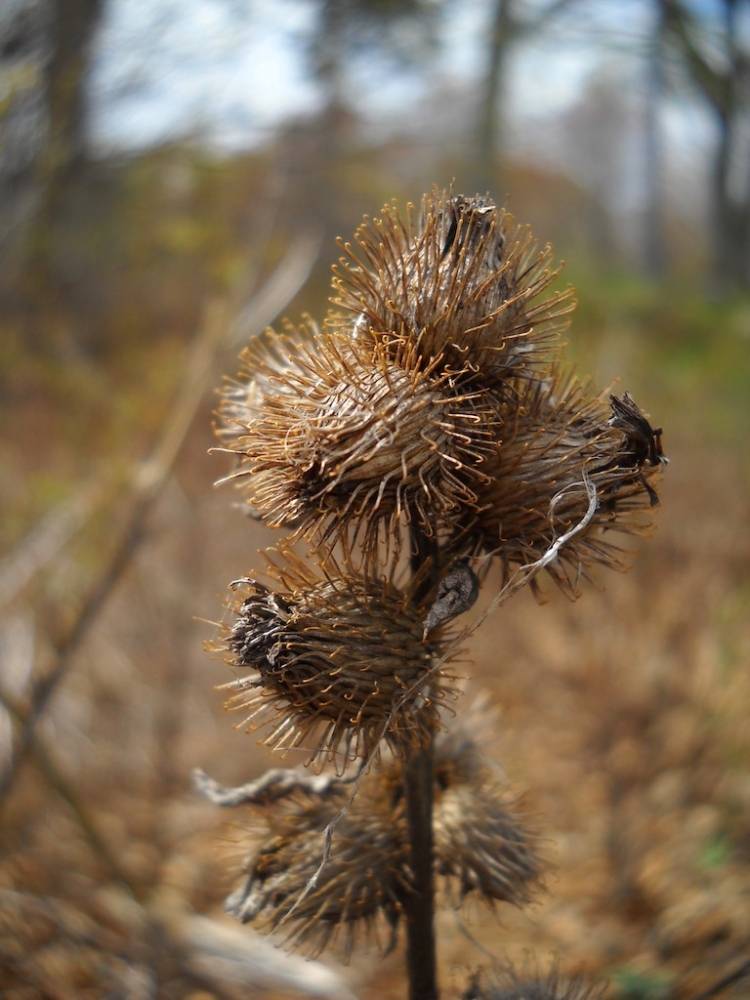common burdock
A native of Europe and Asia, this biennial plant can be found along the interface of the upland woods and lawn area south of the parking lot at Salter Grove.
In its first year, it is a low growing basal rosette of leaves that looks a bit like rhubarb. In its second year, the plant produces a flowering stem three to six feet tall with basal leaves that are as long as two feet and as wide as one and a half feet. The flower head consist of a tight cluster of many purple and some white tubular florets. The slender bracts that envelop the flower head become rigid hooks once they are dry and can attach firmly to animal fur or clothing to disperse the mature seeds.
You may not have known that a Swiss electrical engineer was inspired to invent Velcro after having a closer look at how burrs from the common burdock were firmly stuck to his clothing and the fur of his hunting dog.
Some people eat the young shoots of burdock. The taproot is also used as food but is more often used in medicinal preparations for skin conditions, high blood presure, bladder infections, liver diseases, and even as an aphrodisiac.

